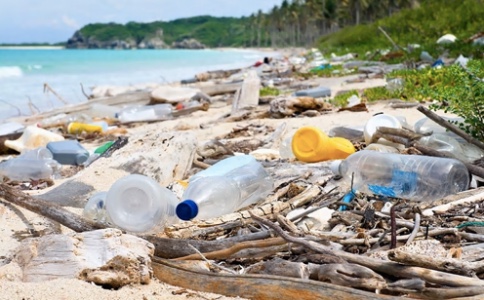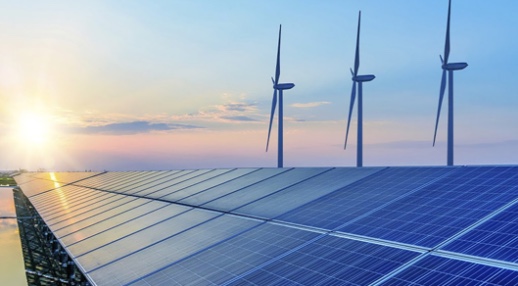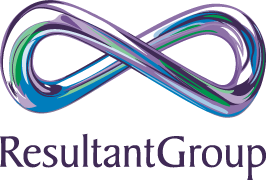Dave Gajadhar
The earth is undergoing continuous change and, as a result, we are experiencing a warming trend. We cannot change the climate; however, we can manage and optimize our resources, mitigate waste, emission and contamination. During this Covid-19 pandemic, the recent issues with reusable plastics and other single-use products as an environmental “enemy” was reversed and highlighted to be the barrier required to protect lives from the virus around the world. What is very evident is these products are necessary and fulfill many needs and uses. The problem lies with how we use and discard these products that cause waste and environmental problems.
Our carelessness to the immediate environment is a real social and environmental issue. This has been demonstrated globally during the pandemic; we’ve seen where people are discarding single-use mask, gloves and other PPE—gardens, sidewalks, waterways parks, etc. I understand that these products have a poor environmental image; however, at the same time, they provide valuable health benefits. Therefore, it is important that we pay attention to the real issue around these products by informing the general public of their responsibilities as well as working with manufacturers and policymakers to move them to be more circular and socially acceptable.

Moving to Circularity and Sustainability
The concept of a Circular Economy (CE) is hot. A growing number of entrepreneurs, policymakers and financiers use this term at every possible occasion—appropriately or not. There are numerous interpretations of what a circular economy is. A widely accepted one is that it is a society in which everything is aimed at using materials and commodities from natural sources as long and as efficiently as possible.
The circular economy is also known as an economic model aimed at creating zero waste and reducing emissions by reducing the amount of energy, natural and raw materials that go into the manufacturing of goods. Reusing resources and optimizing products for multiple uses as much as possible is a key function of circularity; ideally, this should be a closed production loop—thus the term ‘circular’.
To date, little progress has been made on the road to a truly circular economy, If anything, the world is becoming less circular. What is really happening? There is typically only one criterion that decides whether the circular economy is a success—does it enhance sustainability? The circular economy refers to an economic state where resources are kept in a continuous circle of use so that:
- Virgin resources are no longer extracted (e.g., from mining or extraction from the natural environment)
- Existing products should have multiple uses where they are reused, repurposed or recycled to make new products without loss of value, low energy consumption and near-zero-emissions
- No resources are disposed of and no value is lost to landfill or incineration.
This approach is in contrast with the existing ‘take–make–waste’ linear economies seen around the world. Linear economies consume large quantities of raw (virgin) resources to make products, only to dispose of them at the end of their use. This represents a loss of value in terms of the resources that the products contain, and the extraction, energy and processes invested in them as we do not have effective mechanisms in place to monetize end of life products.
The linear economy is not the villain; it is responsible for getting us to where we are today and has enabled huge health, social, economic and cultural benefits to humankind. Since industrialization began, millions have been lifted out of poverty, and we’ve seen substantial increases in the supply of goods and services that people link to quality of life. However, there are a few reasons why the linear economy is, ultimately, at the end of its value lifecycle and that now is the time to transition to a modernized version of use and reuse:
- The costs of extracting raw materials is rising and access to raw materials in shrinking
- Costs to extract, transport and process is steadily increasing
- Environmental land use impacts reducing the supply and quality of the natural resources it relies upon
- Continuous extraction of resources is now faster and more automated and does not allow time for renewal (for example: in forestry and fishing).
These actions are leading to scarcity in the supply of resources, and the depletion of these critical resources is impacting industries globally in addition to environmental degradation and ever-increasing costs of logistics and manufacturing. All incurred costs are, ultimately, passed on to consumers who, as a result, increasingly struggle to maintain and improve living standards and quality of life. They will eventually experience a downward spiral in the benefits the linear economy has delivered in the first place, which will accelerate as the world’s population grows. As such, an economic problem becomes a serious geopolitical problem. Governments are beginning to realize this predicament and in response are promoting a transition towards a more circular economy.
Some forward-thinking organizations have identified the linear economy as a risk to their bottom line and their stakeholders and as such are modernizing their business models to reduce exposure and align with sustainability and environmental compliance policies. However, the challenge is to remain competitive when faced with prevailing economic structures, regulation and standards serving short-term linear business models that continue to result in:
- Unintegrated and unmappable primary and secondary supply chains
- Low-cost instead of quality
- Planned obsolescence, price points
- Consumer perception of quality meaning new
- Negative impacts on the natural world and communities being externalized and not reflected in the cost of products
Nonetheless, success stories are emerging, particularly among entrepreneurial start-ups. Start-ups are nimbler and more adaptable; they can do this without the challenges long-established organizations face, such as developing and launching new products and services without cannibalizing income from existing linear products and services.
The problem remains as the costs of circularity is too high to gain cumulative attraction across most industries. Transitioning to a circular model in itself begins with a wall of hurdles and the fact that there are many negative externalities tied to the traditional economy, air pollution, water uses and access, remain unpriced. This makes non-circular products cheaper than their circular counterparts and does not level the playing field. This is not an endorsement for the government to add taxes to level the playing field. Taxation does not solve economic, industrial and environmental problems! This is because most governments do not allocate the funds as intended.
Circular business models also have higher operational costs. This is partly due to the high costs of compliance, management oversight and reporting on emissions, reuse in design, and higher labor intensity that is required to reuse second-hand products and their components as well as recycle them. The market for recycled materials is still too small, which adds another layer to the costs model. Take plastic for example. Transactional costs are relatively high because circular-economy businesses have to invest to find usable plastics, collect them, sort them and then recycle them, whereas virgin plastic is currently cheaper. (Forbes)
Circular businesses also have a harder time getting traction across the economic and investment circles due to the potential higher risks of costs, failure and the lack of a track record. The effect of all this is that many circular products and services can’t compete because they’re too expensive and affordable to a very limited market. This is not fair competition when you are pushing organizations to be circular; the playing field must be leveled for adoption and success to circularity.
Let’s assume that all hurdles were removed and financing is readily available, circular business models will not always be the preferred solution. A circular economy is not a goal in itself, it’s an effective mean to lower environmental damage and appears best suited to quickly reduce impacts via high volume and frequency of goods consumed that consist of few, homogenous resources, such as food, disposables, packaging, liquids and textiles. Longer-term gains will be attained for more complex, lower frequency goods such as appliances, furniture, electronics and construction.
We are also seeing at times where other strategies can be more effective and some even conflict with circular strategies. In the energy sector, energy transition is key in reducing greenhouse gas (GHG) emissions. Electrification and renewable energy are relatively quick wins. However, renewables are not circular and have costly environmental impacts for wind, solar, EV and battery storage. Everyone is talking about the need to make cars more electric. However, electric cars contain a vast amount of fossil fuel manufactured parts including batteries.
We do not have effective means of reusing end of life solar panels, wind turbines parts and batteries. At the same time, if we all switched to electric vehicles immediately, what would we do with all the fossil-fuel cars? The circular economy is all about retaining value in the loop as long as possible. And to do that, you need partners to ensure the circular ecosystem works and develops simultaneously to support the transition.
Some regions and countries’ governments have made the circular economy a priority. For example, the construction industry in North America accounts for a high percentage of raw-material consumption (lumber, energy, steel, concrete, transportation) and produces a large quantity of CO2 emissions. In this case, taxing emissions and energy use will only add costs to housing and make it more difficult than it already is to citizens. The impact will be the need for more government-supported social housing and assistance, and this is not sustainable. Yet another reason to carefully consider cause and effect before we regulate change.
In theory, we can all make things look and feel great. In practice, there are many challenges and invisible costs associated with circularity and change that eventually ends up coming out of the consumer or taxpayer pocket. While there is a price for environmental accountability, it is also at a tipping point and the current tax and spend model is not sustainable.
The Reality of Our Current Renewable Energy Infrastructure on Sustainability and Circularity
Today, wind turbine blades and end of life solar panels cannot be recycled. Built to withstand hurricane-force winds, the blades can’t easily be crushed, recycled or repurposed. A wind turbine’s blades vary between 100 to 165 feet long and weigh roughly 6 tons, so at the end of their lifespan they can’t just be hauled away. First, you need to cut through the fiberglass using specialized diamond-encrusted industrial saws to create pieces small enough to fit on tractor-trailers and a road-legal r-trailer. These costs along with deconstruction, labor, transportation, tipping, landfill fees and the energy use (emissions), increase exponentially.

Companies are currently searching for ways to deal with the tens of thousands of blades and panels that have reached the end of their lives. That’s created an urgent search for alternatives in places that lack wide-open prairies. Central U.S. landfills are now the final resting place of thousands of blades whose days making renewable energy have come to end and bulldozers bury them out of sight forever in sand interred in stacks that are 30 feet deep.
The wind and solar deconstruction trend will continue, as these two renewable energy sources have an average usable life of 18 to 22 years. As a result, thousands of aging blades and panels will continue to come down from steel towers around the world and most have nowhere to go but landfills. In the U.S. alone, about 8,000 will be removed in each of the next few years. It is going to get worse as most were built more than a decade ago when installations were less than a fifth of what they are now. The end of life blades and panels have a huge social, economic and environmental cumulative impact making them non-circular or sustainable.
There are many business and economic theories to motivate organizations to mitigate supply risks, tack leakage and capture value across the operations, thereby contributing to a greater bottom line. An invisible factor and consideration in the chain is to reduce pollution and improve the consumption of resources as an important part of achieving profitability and circular advantages.
Dave Gajadhar is an Advisor, Speaker, Educator, and an Advocate for Human prosperity and resource optimization at Resultant Group (Edmonton, AB), business modernization, resource optimization and transition advisors. He can be reached at (780) 483-4800, e-mail [email protected] or contact through Twitter: @dgajadar.
 Resultant Group helps companies to identify what matters to each of your stakeholders, participants and clients across your value chain. This enables your organization to optimize resources, monetize excess material and enable your sustainability reporting to convey the business’ unique story reflecting how your business is genuinely managed in a shared and circular economy. Join us at one of our regional workshops. Check out our schedule online at Resultantgroup.com and Companiesforzerowaste.com. Visit @ResultantGroup to learn more about advisory master classes.
Resultant Group helps companies to identify what matters to each of your stakeholders, participants and clients across your value chain. This enables your organization to optimize resources, monetize excess material and enable your sustainability reporting to convey the business’ unique story reflecting how your business is genuinely managed in a shared and circular economy. Join us at one of our regional workshops. Check out our schedule online at Resultantgroup.com and Companiesforzerowaste.com. Visit @ResultantGroup to learn more about advisory master classes.
